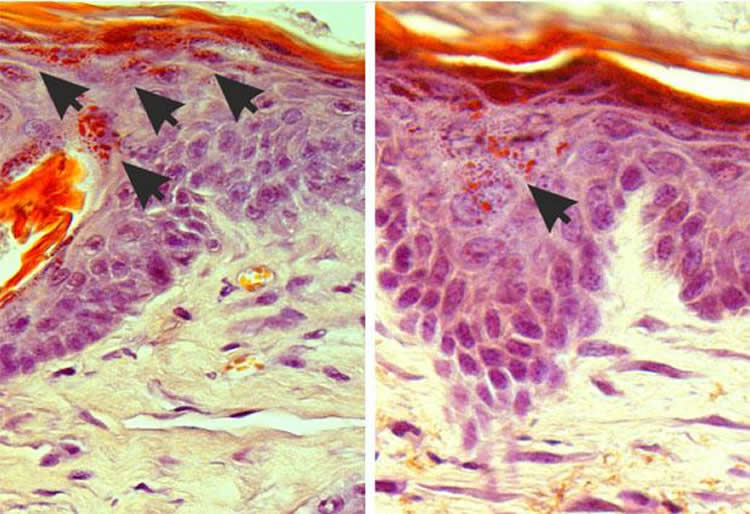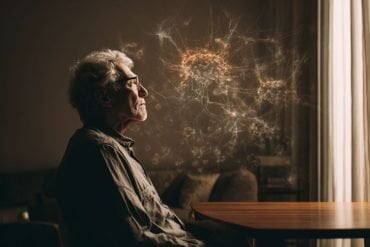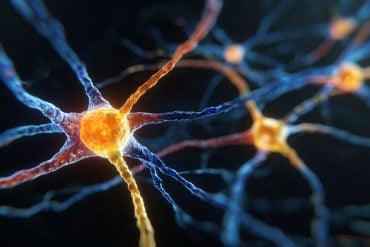Summary: Researchers have developed a light sensitive chemical that binds to specialized nerve cells. When illuminated by near infrared light, the chemical helps stop an itch, allowing for skin healing.
Source: EMBL.
Itch is easily one of the most annoying sensations. For chronic skin diseases like eczema, it’s a major symptom. Although it gives temporary relief, scratching only makes things worse because it can cause skin damage, additional inflammation and even more itch. EMBL researchers have now found a way to stop itch with light in mice. Nature Biomedical Engineering publishes their results on 17 December 2018.
The specialized nerve cells that sense itch are located in the upper surface of the skin. Linda Nocchi, Paul Heppenstall and colleagues at EMBL Rome developed a light-sensitive chemical that binds only to those cells. By first injecting a mouse’s affected skin area with the chemical and then illuminating it with near-infrared light, the itch-sensing cells withdraw from the skin. This stops the itch and allows the skin to heal.
The effect of the treatment can last several months. Other types of nerve cells in your skin – which make you feel specific sensations like pain, vibration, cold or heat – are not affected by the light treatment: the skin only stops itching.
The method works well in mice with eczema (AD: atopic dermatitis), and a rare genetic skin disease called amyloidosis (FPLCA: familial primary localized cutaneous amyloidosis), for which there’s currently no cure. “For me, the most exciting part of this project was seeing the improvements in the animals’ health”, says Linda Nocchi, first author of the paper and postdoctoral researcher in the Heppenstall group. “Their skin looked much better after treatment and they scratched less.”

“We hope that one day, our method will be able to help humans suffering from a disease like eczema, which causes chronic itching”, says Paul Heppenstall, who led the study. It is already known that mice and humans have the same target molecule for itch therapy: a small protein called Interleukin 31 (IL-31). One of the team’s next steps will be to test the light therapy in human tissues.
Previously, the Heppenstall group published a method to manage chronic pain with light. “We think that the mechanism we’ve discovered might be a general method for controlling sensation through the skin”, says Heppenstall. “Our goal now is to take these therapies further. We want to collaborate with industry partners to develop therapies for humans, but also for veterinary medicine, as itch is a major problem in dogs as well.”
Funding: This project in the Heppenstall group at EMBL Rome was financed by Telethon Foundation: a leading Italian charity investing in the research of rare genetic diseases.
Source: Iris Kruijen and Patrick Mueller – EMBL
Publisher: Organized by NeuroscienceNews.com.
Image Source: NeuroscienceNews.com image is credited to Paul Heppenstall and Linda Nocchi / EMBL.
Video Source: Video credited to EMBL.
Original Research: Abstract for “Interleukin-31-mediated photoablation of pruritogenic epidermal neurons reduces itch-associated behaviours in mice” by Linda Nocchi, Nainika Roy, Mariangela D’Attilia, Rahul Dhandapani, Mariano Maffei, Andrei Traista, Laura Castaldi, Emerald Perlas, Cora Hallie Chadick & Paul A. Heppenstall in Nature Biomedical Engineering. Published December 17 2018.
doi:10.1038/s41551-018-0328-5
[cbtabs][cbtab title=”MLA”]EMBL”Using Light to Stop Itch.” NeuroscienceNews. NeuroscienceNews, 17 December 2018.
<https://neurosciencenews.com/light-itch-10350/>.[/cbtab][cbtab title=”APA”]EMBL(2018, December 17). Using Light to Stop Itch. NeuroscienceNews. Retrieved December 17, 2018 from https://neurosciencenews.com/light-itch-10350/[/cbtab][cbtab title=”Chicago”]EMBL”Using Light to Stop Itch.” https://neurosciencenews.com/light-itch-10350/ (accessed December 17, 2018).[/cbtab][/cbtabs]
Abstract
Interleukin-31-mediated photoablation of pruritogenic epidermal neurons reduces itch-associated behaviours in mice
Itch—a major symptom of many chronic skin diseases—can exacerbate inflammation by provoking scratching and subsequent skin damage. Here, we show that activation, via near infrared illumination, of a phototoxic agent that selectively targets itch-sensing cells can reduce itch-associated behaviours in mice. We generated a SNAP-tagged interleukin-31 (IL-31) ligand derivative (IL-31K138A–SNAP) that selectively binds receptors on itch-associated cells, without evoking IL-31-receptor signalling or scratching, and conjugated it to the photosensitizer IRDye 700DX phthalocyanine. Subcutaneous injection of IL-31K138A–SNAP–IR700 in mice followed by near infrared illumination resulted in the long-term reversal of the scratching behaviour evoked by the pruritogenic IL-31, an effect that was associated with the selective retraction of itch-sensing neurons in the skin. We also show that a topical preparation of IL-31K138A–SNAP–IR700 reversed the behavioural and dermatological indicators of disease in mouse models of atopic dermatitis and of the genetic skin disease familial primary localized cutaneous amyloidosis. Targeted photoablation may enable itch control for the treatment of inflammatory skin diseases.






